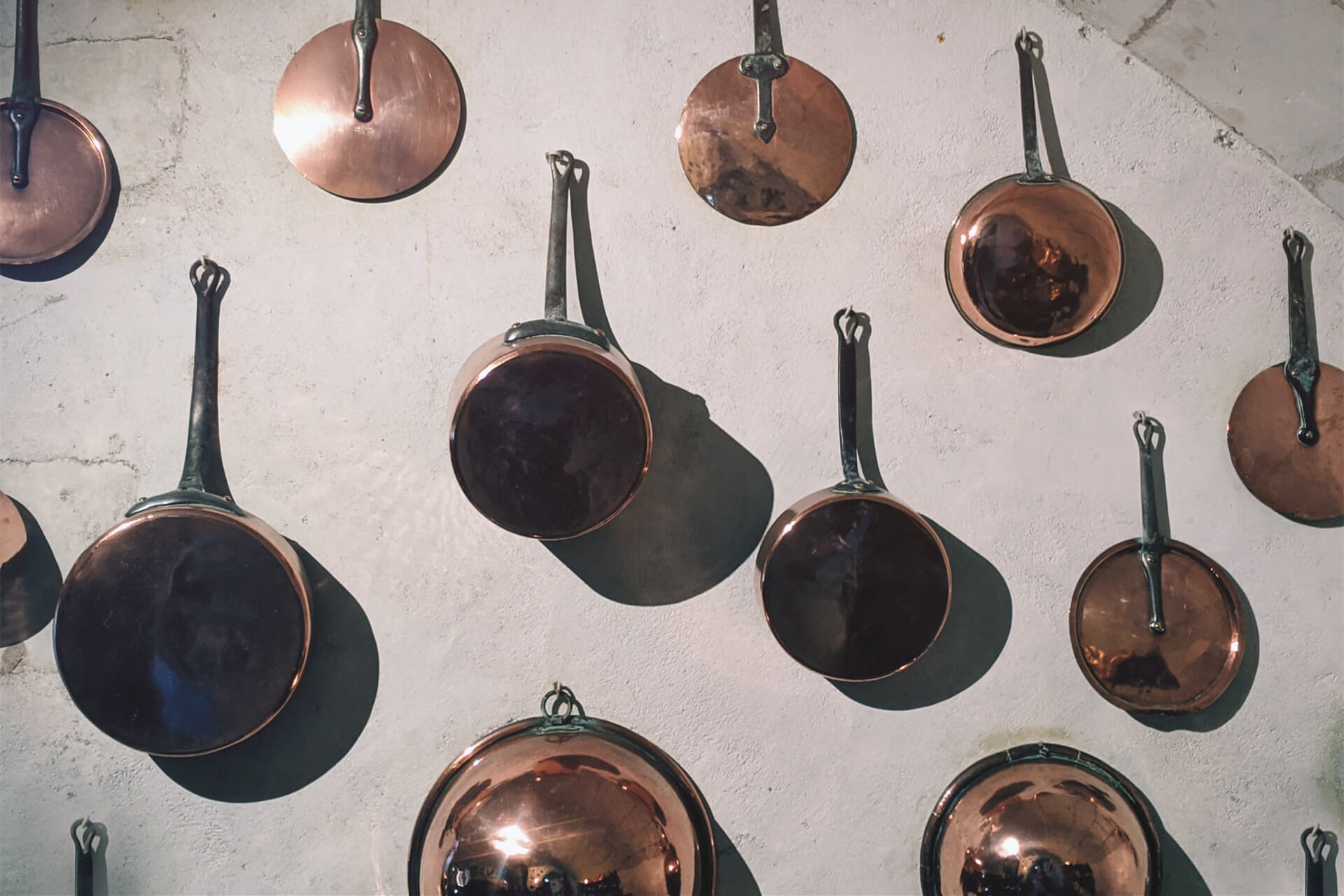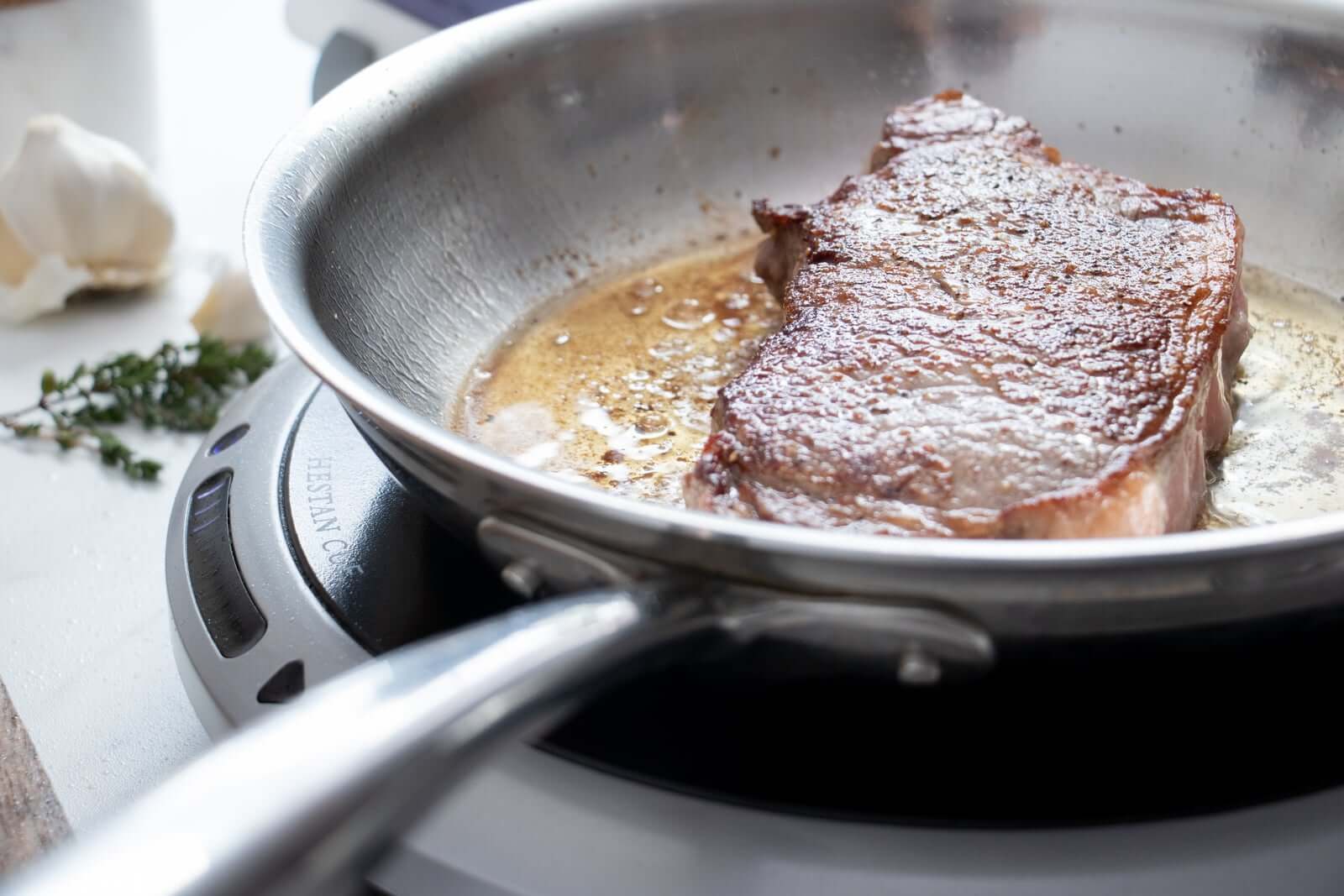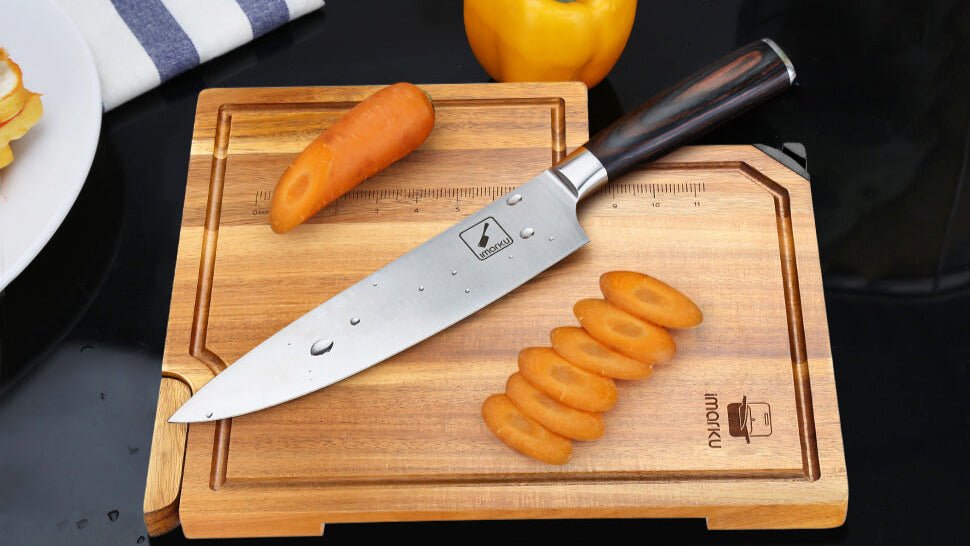TABLE OF CONTENTS
Let’s face it: the number of cookware brands seems to be growing every day. When choosing the perfect set, the most important factor to consider is the cookware materials. Most of them feature materials like aluminum, stainless steel, cast iron, and copper. If you’re a first-time buyer, you should know the pros and cons of each to help you make a worthwhile investment.
Read on to learn more.

Cast iron
Cast iron is a versatile material that consists of 98% iron and 2% carbon. It’s prized for durability and conducts heat very well. Furthermore, it’s an old-fashioned material that delivers lots of flavors when cared for.
Cast iron is slow-regulating which means it heats up and cools down slowly. This makes it the perfect material for fry pans, grill pans, and griddles. Plus, it’s available in its natural state or coated with enamel.
The only challenge with cast iron is that you should apply some seasoning to prevent rust. A splash of lemon juice or an occasional run-in with a few tomatoes will do the trick. Of course, this creates a non-stick interior. If you want to avoid synthetic items in your kitchen, cast iron can be a good choice.
Some brands offer a factory-applied seasoning layer, but it must be maintained properly. Cast iron is generally affordable. This makes them perfect for chefs looking for quality cookware materials without spending a fortune. However, you should be ready to pay more for enameled cast iron, like dutch ovens.
How to clean it
Cast iron is dishwasher safe, so you can wash with soap and water after cooling. If there’s any stuck-on food, you should use a plastic scrub sponge. Avoid using steel wool as this can compromise the seasoning. And after each use, you should place the pan over a burner and heat gently until the residual water dries up.
Overall, cast iron cookware is good for baking, searing, roasting, frying, and stove-to-oven recipes. It’s safe to use on the oven, grill, and direct fire.

Copper
Cooper is a fantastic heat conductor but a little expensive than its competitors. It reacts to temperature changes, so there’s no need to use a high flame. But since copper is a reactive material, it should be lined up with tin or stainless steel. No wonder they are highly prized by professional chefs. Whether you want to produce a fine sauce or sauté with a high degree of precision, copper cookware is a sure bet.
Traditionally, tin is the best material to line up copper as it creates a safe barrier between the contents. It’s also responsive and non-reactive. The only challenge with tin is that it wears out with time and has to be reapplied by a craftsman.
The best quality copper pans should have a thick quality copper gauge, 1/16 to 1/8-inch thick. For instance, copper pots and pans are good for boiling, steaming, and sautéing.
But there are some exemptions when lining copper cookware. Some pans, especially those designed for cooking foods high in sugar are unlined. Notably, such sets can be used for specific tasks like whipping egg whites. But it doesn’t matter if you choose lined or unlined cookware - copper will bring beauty to your kitchen.
When cooper is used alone, it reacts with natural minerals and acidic foods. Even worse, it could add a yellow tint or metallic taste to foods. Another downside with copper is that it should never be placed in a dishwasher. If you want your cookware to stand the test of time, you should hand wash your pieces and wipe them with a dry cloth. You can also apply some polish to maintain luster. If you don’t polish, your cookware will develop a darker patina, but this doesn’t compromise the performance.
Whether you’re an avid cook or a perfectionist, copper remains one of the best cookware out there.

Aluminum
Aluminum is one of the best cookware materials with amazing heat conducting characteristics - it heats 16 times faster than stainless steel.
When strengthened with copper or magnesium, this can be wonderful cookware to own. As you may have guessed, aluminum reacts to acidic foods to form a gray tint. To address this challenge, the cookware is lined with a non-stick coating. Some brands make the cookware undergo anodization. This is a process that hardens the surface of the pans giving a dark grey color. Most manufacturers prefer such cookware, making the interiors durable, attractive, and easier to clean.
Aluminum cookware comes in different forms. Depending on your needs, you can choose:

Plain aluminum with ceramic non-stick coating
This is the perfect cookware if you’re looking for something for day-to-day cooking. It’s eco-friendly and can use used with induction cooktops.

Plain aluminum with PTFE/Teflon coating
Unlike anodized aluminum, plain aluminum does not go through the strengthening process. With Teflon coating, your cookware will last long.

Hard anodized aluminum with non-stick coating
This can be an excellent option if you want to invest in cookware material that provides versatility. The non-stick surface guarantees the best results when cooking eggs and other sticky foods.

Anodized aluminum with Teflon
It offers more cooking options and lasts three longer than plain aluminum cookware. Of course, you should be ready to dig deeper into your pockets.
Since aluminum is light, it’s the perfect solution for griddles, roasting pans, and large water pots.

Read through the detailed comparison between Stainless Steel and Aluminum Cookware, get more knowledge about them.
Stainless steel
Stainless steel is durable, non-reactive, and dishwasher-safe. This material is resistant to scratching and denting. At its core, the cookware is made by adding aluminum and chromium. Stainless steel is also prized for the shiny surface and doesn’t react to alkaline or acidic foods. Even better, it promises a level of purity to whatever you cook on it.
Stainless steel has a non-stick surface – it’s what you need to cook eggs. The only downside with stainless steel is that it’s a poor conductor of heat. Thankfully, most manufacturers add layers of highly conductive metals like copper and aluminum. The trade-off is that stainless steel requires low maintenance and is definitely worth the cost.
To clean your cookware, you only need some soap and water. For burnt-on stains, you should fill the burned pot with water and then boil for a few minutes. Once they loosen up, you should scrape with a wooden spoon. For tougher stains, you can use a stainless steel cleaner or baking soda.
Stainless steel is good for sautéing, braising, searing, and making sauces. It’s safe for ovens, boilers, and stoves.
Are you ready to stock up some cookware in your kitchen?






















Leave a comment
All comments are moderated before being published.
This site is protected by hCaptcha and the hCaptcha Privacy Policy and Terms of Service apply.